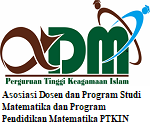Image X-Ray Classification for COVID-19 Detection Using GCLM-ELM
DOI:
https://doi.org/10.15642/mantik.2021.7.1.74-85Keywords:
COVID-19, X-Ray image, CAD, GLCM, ELMAbstract
COVID-19 is a disease or virus that has recently spread worldwide. The disease has also taken many casualties because the virus is notoriously deadly. An examination can be carried out using a chest X-Ray because it costs cheaper compared to swab and PCR tests. The data used in this study was chest X-Ray image data. Chest X-Ray images can be identified using Computer-Aided Diagnosis by utilizing machine learning classification. The first step was the preprocessing stage and feature extraction using the Gray Level Co-Occurrence Matrix (GLCM). The result of the feature extraction was then used at the classification stage. The classification process used was Extreme Learning Machine (ELM). Extreme Learning Machine (ELM) is one of the artificial neural networks with advanced feedforward which has one hidden layer called Single Hidden Layer Feedforward Neural Networks (SLFNs). The results obtained by GLCM feature extraction and classification using ELM achieved the best accuracy of 91.21%, the sensitivity of 100%, and the specificity of 91% at 135° rotation using linear activation function with 15 hidden nodes.
Downloads
References
Z. Y. Zu et al., “Coronavirus disease 2019 (COVID-19): a perspective from China,” Radiology, vol. 296, no. 2, pp. E15–E25, 2020.
P. Boldog, T. Tekeli, Z. Vizi, A. Dénes, F. A. Bartha, and G. Röst, “Risk assessment of novel coronavirus COVID-19 outbreaks outside China,” J. Clin. Med., vol. 9, no. 2, p. 571, 2020.
K.-C. Liu et al., “CT manifestations of coronavirus disease-2019: a retrospective analysis of 73 cases by disease severity,” Eur. J. Radiol., vol. 126, p. 108941, 2020.
C. Huang et al., “Clinical Features of Patients Infected with 2019 Novel Coronavirus in Wuhan, China,” pp. 497–506, 2020.
D. Wang et al., “Clinical characteristics of 138 hospitalized patients with 2019 novel coronavirus–infected pneumonia in Wuhan, China,” Jama, vol. 323, no. 11, pp. 1061–1069, 2020.
J. E. Corral et al., “COVID-19 polymerase chain reaction testing before endoscopy: an economic analysis,” Gastrointest. Endosc., vol. 92, no. 3, pp. 524–534, 2020.
D. C. R. Novitasari et al., “Detection of covid-19 chest x-ray using support vector machine and convolutional neural network,” Commun. Math. Biol. Neurosci., vol. 2020, p. Article-ID, 2020.
A. H. Asyhar, A. Z. Foeady, M. Thohir, A. Z. Arifin, D. Z. Haq, and D. C. R. Novitasari, “Implementation LSTM Algorithm for Cervical Cancer using Colposcopy Data,” 2020 Int. Conf. Artif. Intell. Inf. Commun., pp. 485–489, 2020.
M. Thohir, A. Z. Foeady, D. C. R. Novitasari, A. Z. Arifin, B. Y. Phiadelvira, and A. H. Asyhar, “Classification of Colposcopy Data Using GLCM-SVM on Cervical Cancer,” in 2020 International Conference on Artificial Intelligence in Information and Communication (ICAIIC), 2020, pp. 373–378.
Y. Wang, Z. Li, L. Feng, C. Zheng, and W. Zhang, “Automatic detection of epilepsy and seizure using multiclass sparse extreme learning machine classification,” Comput. Math. Methods Med., vol. 2017, 2017.
S. Ding, H. Zhao, Y. Zhang, X. Xu, and R. Nie, “Extreme learning machine: algorithm, theory and applications,” Artif. Intell. Rev., vol. 44, no. 1, pp. 103–115, 2015.
B. S. Chhikara, B. Rathi, J. Singh, and F. N. U. Poonam, “Corona virus SARS-CoV-2 disease COVID-19: Infection, prevention and clinical advances of the prospective chemical drug therapeutics,” Chem. Biol. Lett., vol. 7, no. 1, pp. 63–72, 2020.
L. Lin, L. Lu, W. Cao, and T. Li, “Hypothesis for potential pathogenesis of SARS-CoV-2 infection–a review of immune changes in patients with viral pneumonia,” Emerg. Microbes Infect., vol. 9, no. 1, pp. 727–732, 2020.
Y. Jee, “WHO international health regulations emergency committee for the COVID-19 outbreak,” Epidemiol. Health, vol. 42, 2020.
H. Al-Najjar and N. AL-Rousan, “Can Covid-19 Virus be created in the Laboratory?: A Theoretical Experimental Study,” A Theor. Exp. Study (April 22, 2020), 2020.
W. Ji, G. Bishnu, Z. Cai, and X. Shen, “Analysis clinical features of COVID-19 infection in secondary epidemic area and report potential biomarkers in evaluation,” MedRxiv, 2020.
H. Dai et al., “High-resolution chest CT features and clinical characteristics of patients infected with COVID-19 in Jiangsu, China,” Int. J. Infect. Dis., vol. 95, pp. 106–112, 2020.
A. Z. Foeady, D. C. R. Novitasari, A. H. Asyhar, and M. Firmansjah, “Automated Diagnosis System of Diabetic Retinopathy Using GLCM Method and SVM Classifier,” Proceeding Electr. Eng. Comput. Sci. Informatics, vol. 5, no. 1, pp. 154–160, 2018.
D. C. R. Novitasari, W. T. Puspitasari, P. Wulandari, A. Z. Foeady, and M. F. Rozi, “Klasifikasi Alzheimer dan Non Alzheimer Menggunakan Fuzzy C-Mean, Gray Level Co-Occurence Matrix dan Support Vector Machine,” J. Mat. MANTIK, vol. 4, no. 2, pp. 83–89, 2018.
Ş. Öztürk and B. Akdemir, “Application of feature extraction and classification methods for histopathological image using GLCM, LBP, LBGLCM, GLRLM and SFTA,” Procedia Comput. Sci., vol. 132, pp. 40–46, 2018.
A. Harshavardhan, S. Babu, and T. Venugopal, “Analysis of feature extraction methods for the classification of brain tumor detection,” Int. J. Pure Appl. Math., vol. 117, no. 7, pp. 147–155, 2017.
M. Hall-Beyer, “Practical guidelines for choosing GLCM textures to use in landscape classification tasks over a range of moderate spatial scales,” Int. J. Remote Sens., vol. 38, no. 5, pp. 1312–1338, 2017.
B. Ghojogh and M. Crowley, “The theory behind overfitting, cross validation, regularization, bagging, and boosting: tutorial,” arXiv Prepr. arXiv1905.12787, 2019.
T.-T. Wong and N.-Y. Yang, “Dependency analysis of accuracy estimates in k-fold cross validation,” IEEE Trans. Knowl. Data Eng., vol. 29, no. 11, pp. 2417–2427, 2017.
M. A. A. Albadra and S. Tiuna, “Extreme learning machine: a review,” Int. J. Appl. Eng. Res., vol. 12, no. 14, pp. 4610–4623, 2017.
F. Kang, J. Liu, J. Li, and S. Li, “Concrete dam deformation prediction model for health monitoring based on extreme learning machine,” Struct. Control Heal. Monit., vol. 24, no. 10, p. e1997, 2017.
Y. Kuang, Q. Wu, J. Shao, J. Wu, and X. Wu, “Extreme learning machine classification method for lower limb movement recognition,” Cluster Comput., vol. 20, no. 4, pp. 3051–3059, 2017.
S. Handika, I. Gririantari, and A. Dharma, “Perbandingan Metode Extreme Learning Machine dan Particle Swarm Optimization Extreme Learning Machine untuk Peramalan Jumlah Penjualan Barang,” Maj. Ilm. Teknol. Elektro, vol. 15, no. 1, p. 84, 2016.
J. Cao, K. Zhang, M. Luo, C. Yin, and X. Lai, “Extreme learning machine and adaptive sparse representation for image classification,” Neural networks, vol. 81, pp. 91–102, 2016.
X. Deng, Q. Liu, Y. Deng, and S. Mahadevan, “An improved method to construct basic probability assignment based on the confusion matrix for classification problem,” Inf. Sci. (Ny)., vol. 340–341, pp. 250–261, 2016.
D. S. Kermany et al., “Identifying medical diagnoses and treatable diseases by image-based deep learning,” Cell, vol. 172, no. 5, pp. 1122–1131, 2018.
P. Mooney, “Chest X-Ray Images (Pneumonia),” Kaggle, 2018. .
Github, “Covid Chest X-Ray Dataset,” 2019. .
D. C. R. Novitasari, A. Lubab, A. Sawiji, and A. H. Asyhar, “Application of feature extraction for breast cancer using one order statistic, GLCM, GLRLM, and GLDM,” Adv. Sci. Technol. Eng. Syst. J., vol. 4, no. 4, pp. 115–120, 2019.
D. C. R. Novitasari, A. H. Asyhar, M. Thohir, A. Z. Arifin, H. Mu’jizah, and A. Z. Foeady, “Cervical Cancer Identification Based Texture Analysis Using GLCM-KELM on Colposcopy Data,” in 2020 International Conference on Artificial Intelligence in Information and Communication (ICAIIC), 2020, pp. 409–414.
S. Ding, N. Zhang, X. Xu, L. Guo, and J. Zhang, “Deep Extreme Learning Machine and Its Application in EEG Classification,” Math. Probl. Eng., vol. 2015, 2015.
Downloads
Published
How to Cite
Issue
Section
License
- Authors retain copyright and grant the journal right of first publication with the work simultaneously licensed under a Creative Commons License that allows others to share the work with an acknowledgment of the work's authorship and initial publication in this journal.
- Authors are able to enter into separate, additional contractual arrangements for the non-exclusive distribution of the journal's published version of the work (e.g., post it to an institutional repository or publish it in a book), with an acknowledgment of its initial publication in this journal.
- Authors are permitted and encouraged to post their work online (e.g., in institutional repositories or on their website) prior to and during the submission process, as it can lead to productive exchanges, as well as earlier and greater citation of published work







.png)




